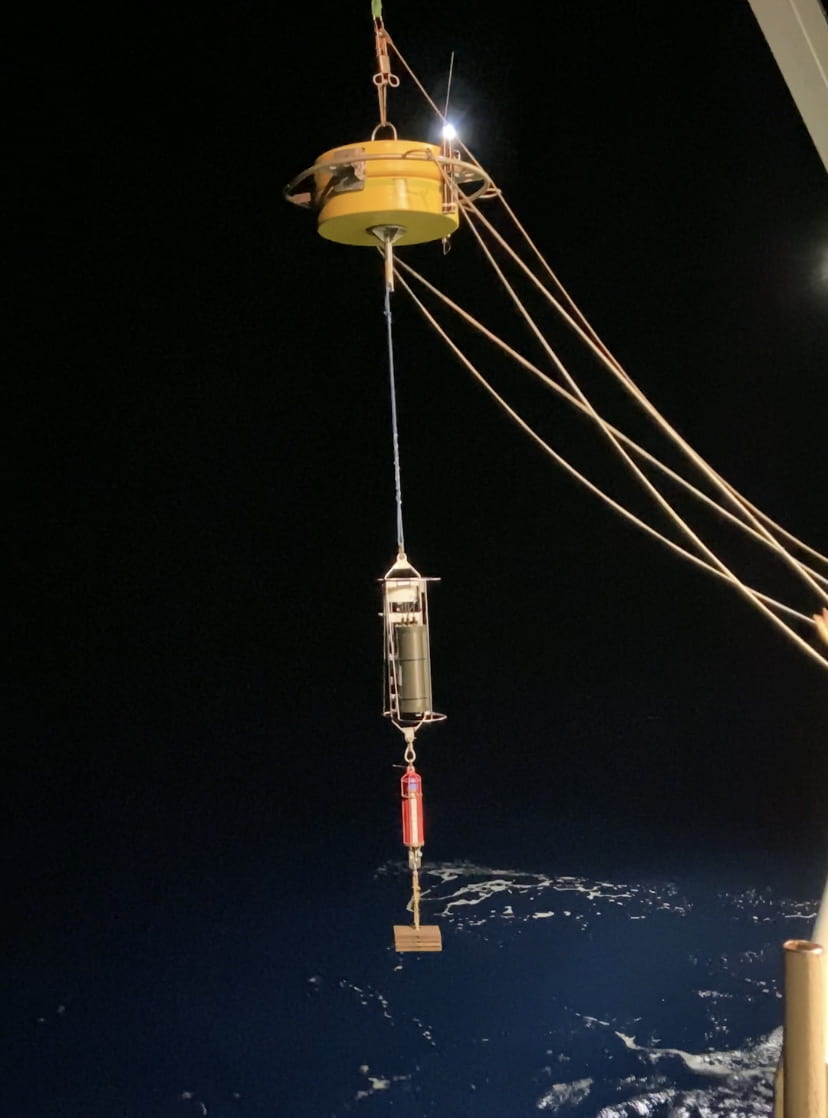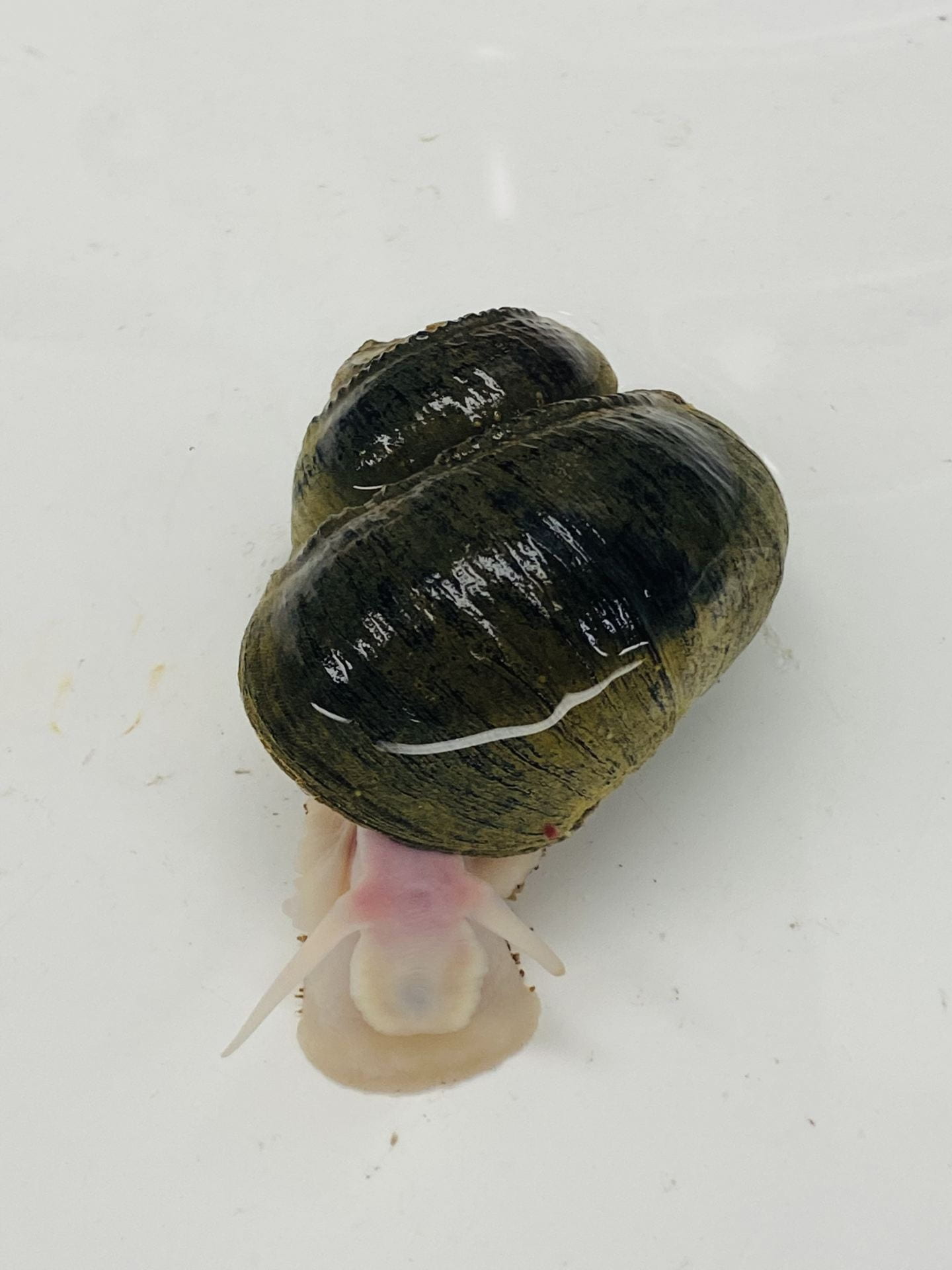
April 9th, 2022. It’s been a while, but we made it to the Lau Basin! It’s located just northwest of the Kingdom of Tonga, and near the Hunga-Tonga Hunga-Ha’apai volcano that erupted in February. Within this basin there are a series of hydrothermal vents (underwater volcanoes) along a north-south axis. We will be visiting 6 different sites across it, twice, once to deploy equipment, and a second to recover them. Currently, we are at our third site. We started at Kilo Moana, a site where there’s no active venting, then we went to Tow Cam, and are now at Tahi Moana. One interesting feature of these sites is that there is a geological gradient transitioning from basaltic rock in the north to andesitic rock in the south. In the samples we’ve been sorting so far there’s been a lot of small pieces of basalt. This gradient has been linked to a gradient in vent fluid geochemistry as well, which we are curious to the impacts on our target snails’ bacterial symbionts.
Sample Collection Methods
To get all of our samples we are making use of three different methods: the Autonomous Underwater Vehicle (AUV) Sentry, the McLane pump, and the Remote Operated Vehicle (ROV) Jason.

AUV Sentry works independently of the ship with a pre-programmed course mapped out. As it travels it hovers at a set altitude and filters water through two “plankzookas”, collecting plankton and hopefully our target larvae. It communicates acoustically via “chirps” to a team on board, sending updates on location, vehicle status, and science equipment status. The team can send small messages back altering the mission, small changes to the course, control the science equipment, or even abort the mission.

The McLane pump is within a metal frame and pumps water at a rate of 30 liters per minute for 24 hours over a 60µm sieve. The pump has a weight stack with an acoustic release and a float pack overhead that allows us to deploy it over the side of the ship and release it off the seafloor without guiding it. Once the pump is on the seafloor, ROV Jason will move it next to a chimney to collect more larvae and is programmed to pump during Sentry’s dive. This pump so far has been most efficient at collecting live larvae, that we can try to raise and preserve on the ship.

ROV Jason is attached to the ship with a cable, where it can be controlled from a storage container (“van”) on board. Within this van, members of the science party can watch live footage from the vehicle. They can communicate with the Jason pilot, co-pilot, navigator, and data manager to collect samples, deploy instruments, explore sites, and take videos / pictures. Jason has two manipulator arms that are controlled by the pilot and can use a multitude of tools including scoops, temperature probes, a slurp, mussel pots, and the SuPR sampler. This allows us to collect adult and juvenile target species, deploy / recover other instruments, and sample water for free-living bacterial symbionts in the environment.
Explorations of the Natural World
With the aid of all these instruments and vehicles, we’ve begun to explore our study sites, filled with excitement and anticipation. For many of us this is the first time really seeing hydrothermal vents, habitats many of us have dreamt of seeing since childhood. An unrivaled experience is driving up to a massive rock chimney jutting out of the seafloor, spewing hydrothermal fluid. Covered in sea stars, crabs, and snails. The sheer size of it towering over the ROV, understanding this fluid sustains unique ecosystems. After over an hour and a half descent to get to these 2600m deep sites also instills a sense of how remote and hard to reach these vents are. The vent fluid shimmers in the water, highlighting the hot temperatures and chemical richness spewing out. Even though we are still on the ship, within the van surrounded by screens with different cameras and vehicle information, it feels like we are in the ROV seeing these sights firsthand.
One amazing experience happened at 2am at our dive in Tow Cam. After we placed the McLane pump down, we realized we were within a ring of hydrothermal vents, surrounded by rocky peaks. We began to explore the surfaces up and down, searching for our target snails, and surveying the area. As we exited the center, we came face to face with a brilliant orange dumbo octopus. The van erupted into excited gasps and panic to get the cameras rolling. It was a rare sight to see, and one that will stick with all of us in the van forever.
Another cool creature came to us not during a dive, but during the recovery of Jason. When ascending, sometimes fish will get caught on the vehicle and during our Tahi Moana recovery, we accidentally snagged this majestic dragonfish. With an iridescent body and long pointy teeth, it’s certainly nothing like the fish we’ve seen before. We all gathered around to observe it, a deep fish that’s made it to the surface, in relatively good condition for a 2.5km pressure change (about 255 atmospheres!). Unfortunately, we are not here for fish and do not have a permit for keeping them, so we couldn’t hold on to it, and said our goodbyes.
Ifremaria nautilei
I want to end this post by highlighting one of the snail species we’re studying on this cruise, as we’ve been collecting a lot of them, and have been spent a lot of time on their processing. Ifremaria nautilei is a species of deep-sea provannid snail that can be found across all our active sites in this arc-basin, and even in other vent sites like the North Fiji Basin. Here are some headshots of some models collected from Tahi Moana. The bigger ones are about the size of a baseball! What makes these snails so interesting is their unique reproduction. Within their foot (the muscle they crawl around on) they have a brood pouch to raise the embryos. However, these embryos are transported along a ciliated groove (ciliated = moving hairs) into the pouch that expose them to the environment prior to development. They then develop into unique “Waren’s larva”, which have only recently been described. As all of our study snails at these sites have bacterial symbionts that allow them to survive on vent fluid, we are interested to explore when Ifremaria get their symbionts. Whether or not symbionts are acquired during this external movement of embryos to the brood pouch, or during their free-swimming larval stage is something to be explored. Little is known about the Waren’s larva as well, and we hope to learn more about them and potentially culture them on this cruise.







